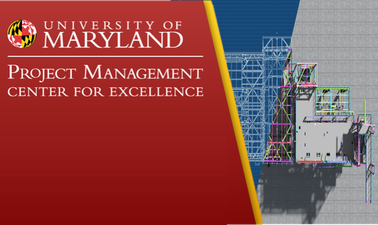- Level Foundation
- Duration 10 hours
- Course by The University of Maryland, College Park
- Total students 7,311 enrolled
-
Offered by

About
Building Information Modeling (BIM) has initiated a sea change in the way that engineers approach the design and construction of buildings. Autocad, and 2D-centric methods in general, have been pushed aside to make way for 3D-centric workflows and design processes rooted in parametric modeling, interoperability, visualization, Work-sharing, and automation that leverage the latest advancements in computing technology. Advanced 3D modeling programs (including Autodesk Revit and others), simulations, augmented reality, virtual reality, and other technologies have presented design professionals and project teams with new opportunities to maximize design the efficiency, functionality, and performance of buildings, to streamline and optimize design and construction operations, to study building lifecycles, and to help mitigate the impact of buildings on the environment.
However, as the AEC industry rapidly evolves by adopting BIM workflows, the educational system has been slow to respond. There is an ever-widening gap between the traditional engineering curriculum and the skills that students need when they graduate. This course will fill that gap by not only broadly introducing students to Virtual Design and BIM, but will introduce students to Autodesk Revit with future courses developed specifically for Structural Engineers, MEP Engineers, Fire Protection Engineers, and Construction Engineers.
What you will learn
This introductory course will include the following:
- Introduction to basic BIM Theory and 3D modeling and parametric modeling
- Discussing the benefits of visualization, and basic Revit workflows
- Introduction to the Revit UI, basic Revit modeling tools, and general Revit functionality
- Tutorials on how to start a new Revit project and use Revit templates
- Tutorials on how to model simple building components in Revit, and how to create basic building views, including 3D views, elevations, plans, sections, and details.
Skills you learn
- Interoperability
- Automation
- Autodesk Revit
- Operations
- Coordinating
- Augmented Reality
- AutoCAD
- Information Model
- Building Design
- 3D Modeling
- Virtual Reality
- Construction
- Fire Protection
- Parametric Modeling
- Building Information Modeling
- Mechanical Electrical And Plumbing (MEP) Systems
- Visualization
- Workflow Management
Syllabus
Week 1: BIM and VDC: What are they and why are they important?
Week 2: Basic Revit modeling concepts
Week 3: Basic Revit modeling - simple vertical building components
Week 4: Basic Revit modeling - simple horizontal building elements
Week 5: Documentation in Revit and Future Courses
Auto Summary
"Virtual Building Design for Engineers Using Autodesk Revit" is a foundational course in Science & Engineering, taught by edX. It focuses on Building Information Modeling (BIM) using Autodesk Revit. Spanning 10 weeks, it covers advanced 3D modeling, simulations, and virtual technologies to enhance building design efficiency and performance. Suitable for aspiring engineers, it bridges the gap between traditional curricula and modern industry needs. Available through a professional subscription.

Jason Dreher


